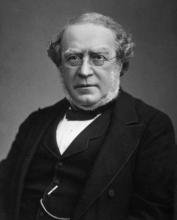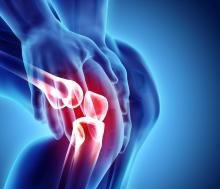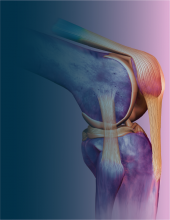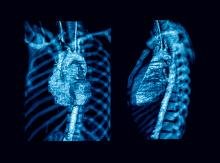Peer review process:
All papers submitted to GRP undergo a peer review process that assesses a draft’s scientific precision, novelty, importance and contribution to regional and global literature. Papers commissioned by the Editor or those corresponding to the magazine section will also undergo evaluation by the Editorial Board.
GRP authorship policy
The policies of the International Committee of Medical Journals Editors set forth the following requirements for authorship credentials:
- Substantial contributions to the development or design of the work, or the acquisition, analysis and interpretation of data.
- Drafting or critically reviewing the paper for material intellectual content.
- Definitive approval of the published version.
- The agreement guarantees that questions related to the precision or integrity of any part of the work are researched and solved adequately.
All of the above shall be met. Each author must be able to identify the co-authors responsible for specific parts of the work. Furthermore, authors shall trust the integrity of co-author’s contributions. Any person included in the list as co-author will receive confirmation via e-mail of the paper’s submission.
Participation in the acquisition of funding, data collection or general supervision of a research team does not justify authorship. We wish all authors included in a paper guarantee authorship criteria. Likewise, we request assurances that no other person meeting the criteria has been excluded as an author.
Acknowledging contributors
All contributors that fail to meet authorship criteria shall be listed in an “Acknowledgments” section. People providing technical assistance, writing assistance or the chief of a department that provided general assistance, among others, should be included in the acknowledgements. Financial and material support should also be acknowledged. Please ensure that any person included has granted permission to be listed.
Groups of people that have materially contributed to the document, but whose contributions do not justify authorship, may be included as “Collaborators”, and their contribution should be clearly stated in the contribution statement. For example, “he/she contributed as scientific advisor”, “he/she critically reviewed the study proposal”, “collected data” or “provided care for the study’s patients”.
As readers may infer contributors back data and conclusions, all persons shall provide written authorization to be included in the manuscript.
Group authorship
If there is a considerable number of authors, we may request confirmation that all included meet the ICMJE criteria for authorship. If so, we may suggest authors form a group and be named as such in the paper. If the list of authors includes a group name, MEDLINE will list the names of individual members that act as authors or collaborators (sometimes named “non-author contributors”) if there is a note linked to the sentence clearly indicating that individual names are in another part of the paper and if those names are authors or collaborators.
Statement of Contribution
A statement of contribution for each manuscript submitted is required. The statement shall describe who has contributed what to the planning, application and reports of work described in the paper. The statement shall include both authors and collaborators.
Changes in affiliation
If an author’s affiliation has changed during the course of work, the author may include his or her affiliation at the time of research (or during the major part thereof), his or her current affiliation, or both. For greater clarity, changes in affiliation may be explained in the acknowledgements section.
Changes in authorship
Any author amendments after initial submission must be approved by all authors. This applies to additions, removals, changes of the order of author’s names or a change in accreditation of contributions. Any change must be explained to the Editor. The Editor may contact any of the authors/collaborators to determine whether they have accepted said modification.
Deceased authors
Deceased authors considered as authors shall be included accompanied by the dagger symbol (†) next to their name and by an explanatory footnote that states their date of death, i.e., “† Deceased January 1, 2019”.
Assignment of rights
Use the following link to download the form and send it jointly with the paper
https://docs.google.com/document/d/10KCa7c2vXRJ8XOIJyBW9pMUdb9FSBy416x_Ahj9K9S0/edit?usp=sharing
Suggestion of reviewers
When submitting your paper, you may be asked to suggest two to three potential reviewers. Editors will not necessarily invite suggested reviewers, but these suggestions may help accelerate the peer-review process. The best suggestions for proposed reviewers are:
- Suggest reviewers whose expertise in the field you value.
- You don’t need to personally know your reviewers and the reviewers will not know you suggested them.
- Make sure suggested reviewers are not your current or recent colleagues or co-authors.
- Suggest researchers that have in-depth knowledge on the subject and are willing to invest the time required.
Fees for the publication of papers
All GRP papers will be initially published under Gold Open Access format without any fees for authors. PANLAR finances the journal and will look for ethical alternative channels to sustain publication with free access and without paper processing fees for readers.
Ethical considerations
Research ethic
Our policy is to guarantee all papers published in GRP inform about research that is morally acceptable and that authors follow the Helsinki Declaration of the World Medical Association. To achieve this, we aim at evaluating the ethical aspects of any paper sent that involves human participants, independently of the description tags of said work, including research, auditing and, at times, the debate.
Among the cases seen every year by the Publications Ethics Committee (COPE, in Spanish), the worst constitute fraud, plagiarism, redundant publications and undeclared conflicts of interests. However, the most common are, by far, conflicts of interest among authors.
We require that each research paper submitted includes a statement that the study obtained ethical approval (or a statement that said approval was not necessary and why), including the name(s) of the ethics committee(s) or institutional review board(s), the number/identification of approval(s) and a statement of informed consent by participants prior to their participation.
Additionally, we request detailed explanations of how researchers and authors have considered and justified the ethical and moral aspects of their work. If these details are not clearly stated in the draft, please explain in a cover letter or upload it as a complementary file when submitting your paper. We would also be glad to see copies of the explanatory information provided to participants. Even if detailed information is not included in a final published version, we may make it available for reviewers and editorial committees.
Documents will be considered for publication only if they follow these guidelines:
- They conform to international, national and institutional guidelines for the human treatment of animals and fulfill relevant legislation.
- They have been approved by the ethical review committee of the institution or the practice in which studies were performed (if applicable).
- Studies involving non-human primates should prove standards meet standards for primates.
- For studies on animals owned by the client, the study proves a high standard (better practices) of veterinary care and involves the client’s informed consent.
Prior to the document being accepted, authors shall:
- Confirm that all legal and ethical conditions regarding human treatment of animals described in the study have been fulfilled.
- The approval process of the ethical review committee and the international, national or institutional guidelines followed should be specified in the Materials or Methods section of the document.






































































































































































































